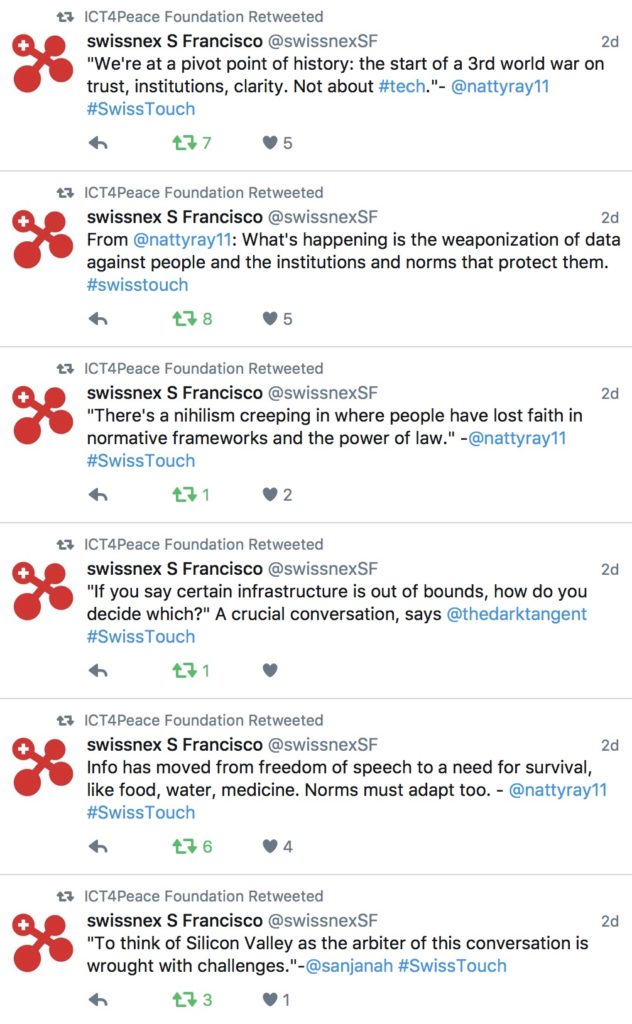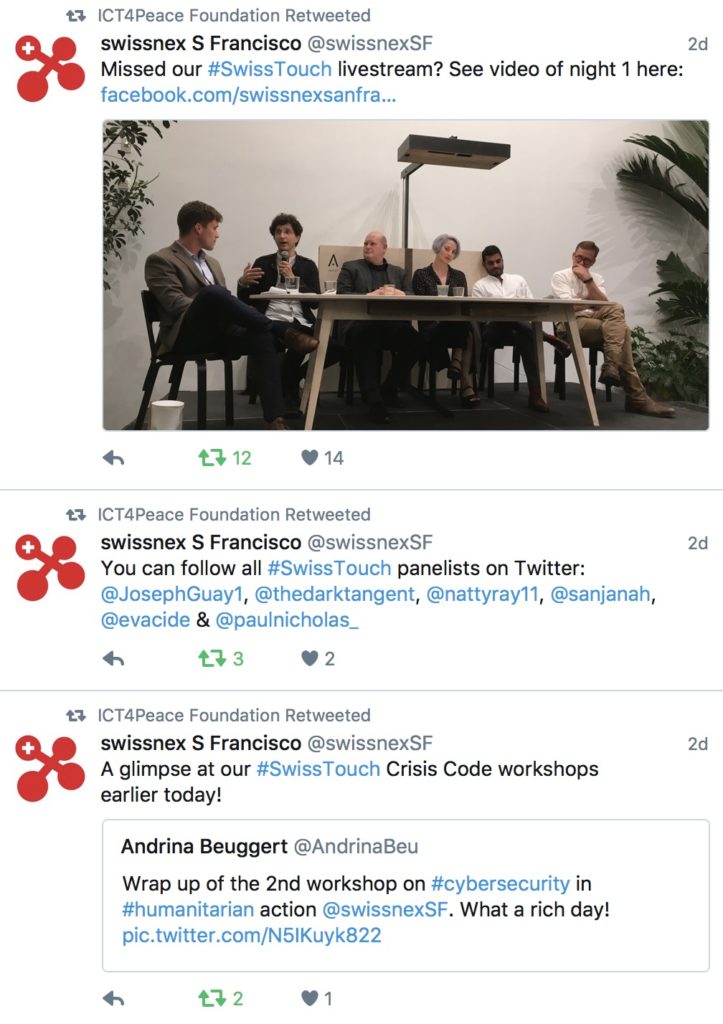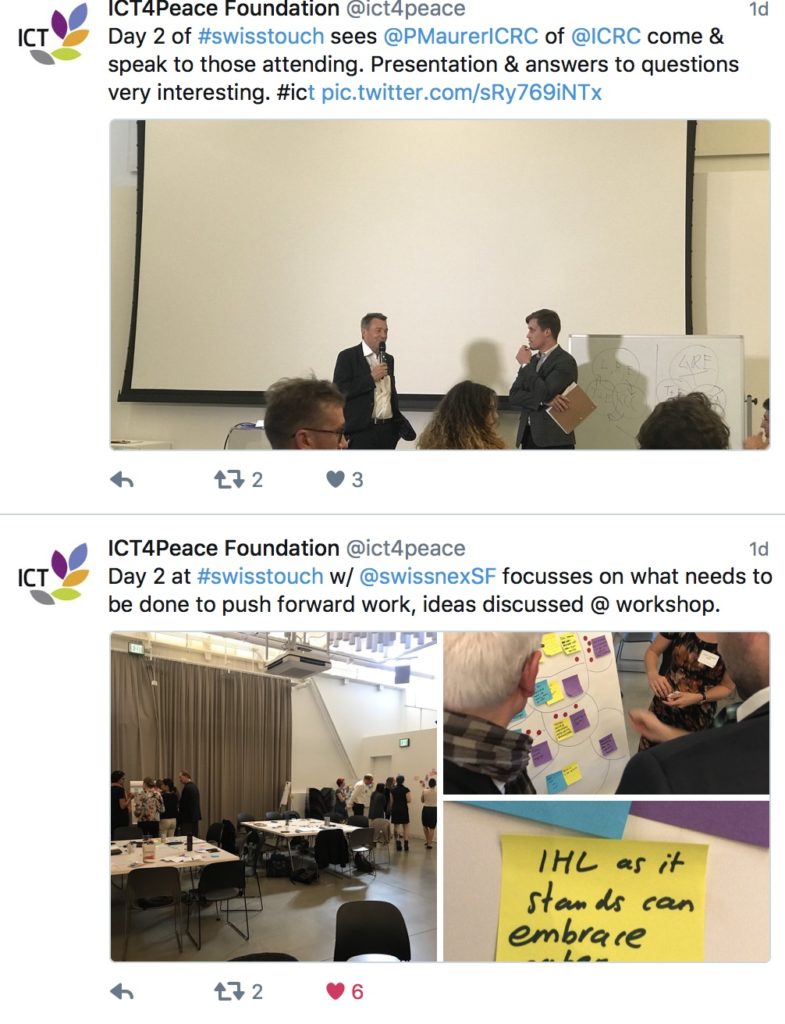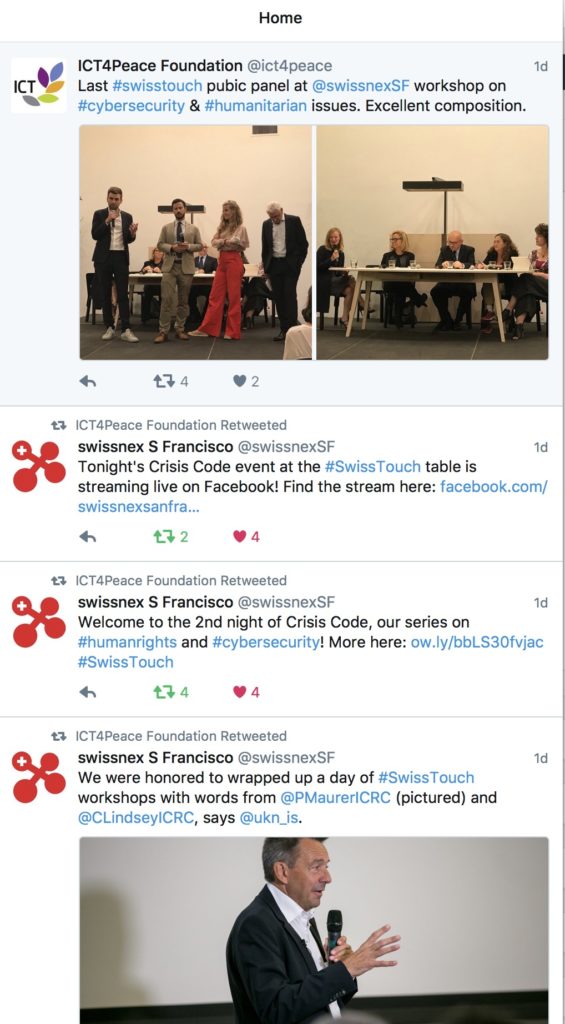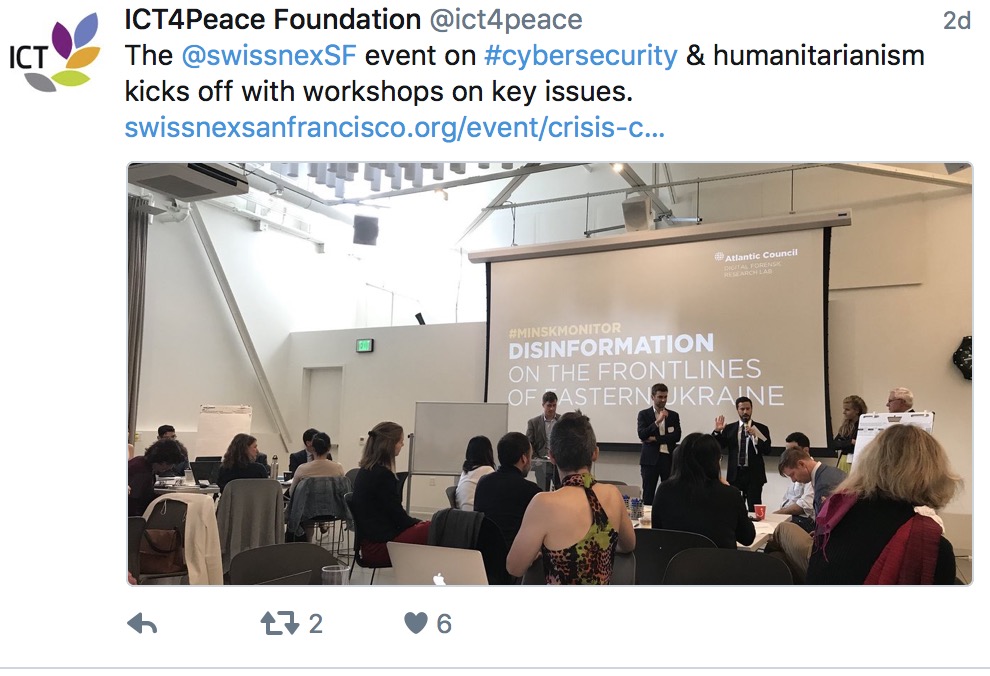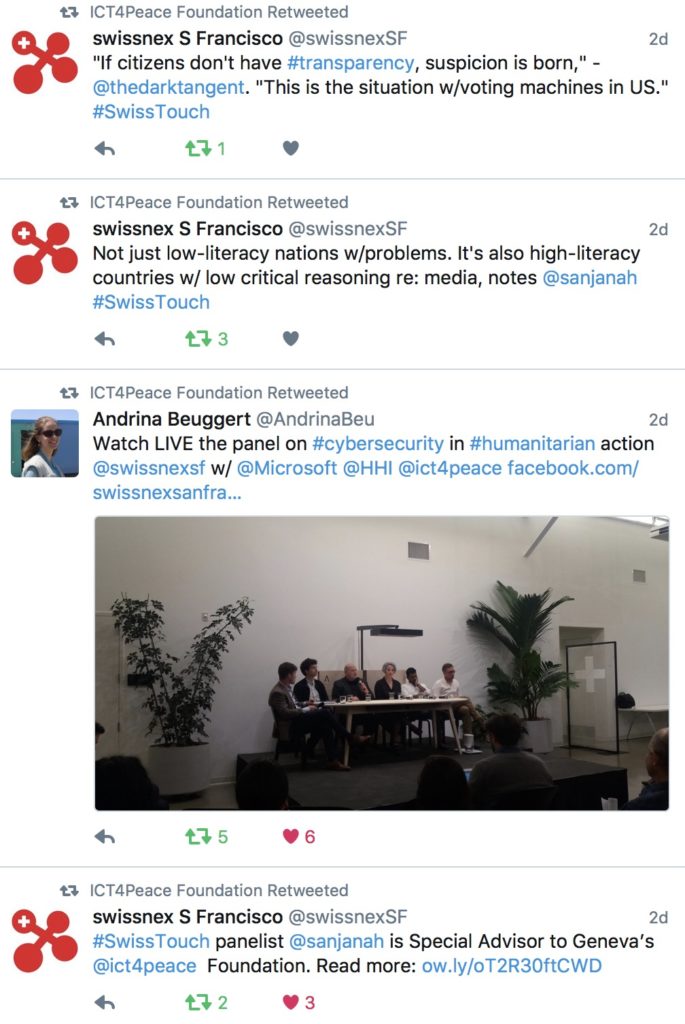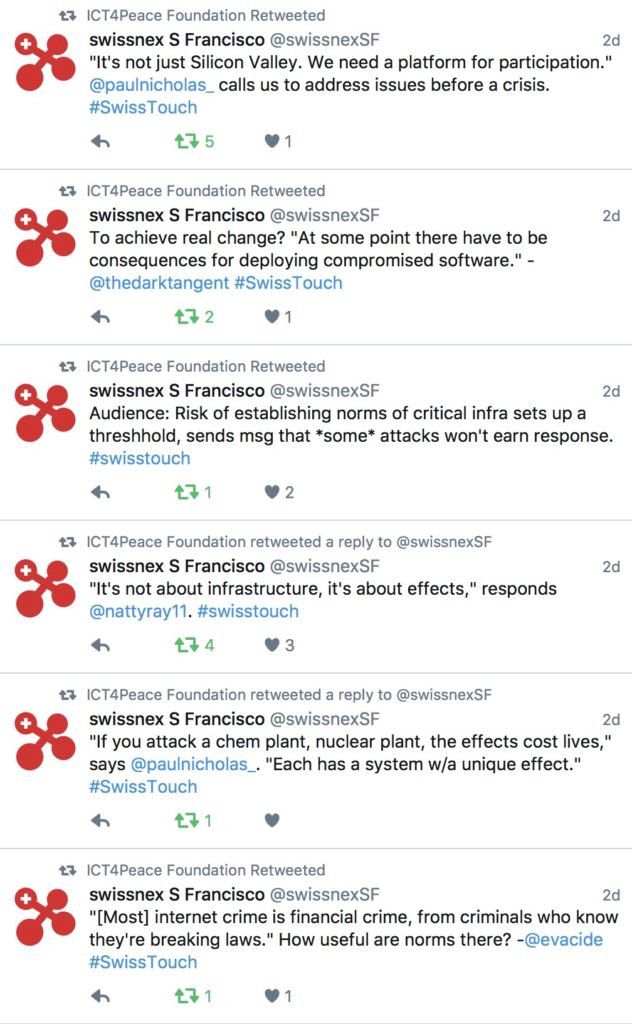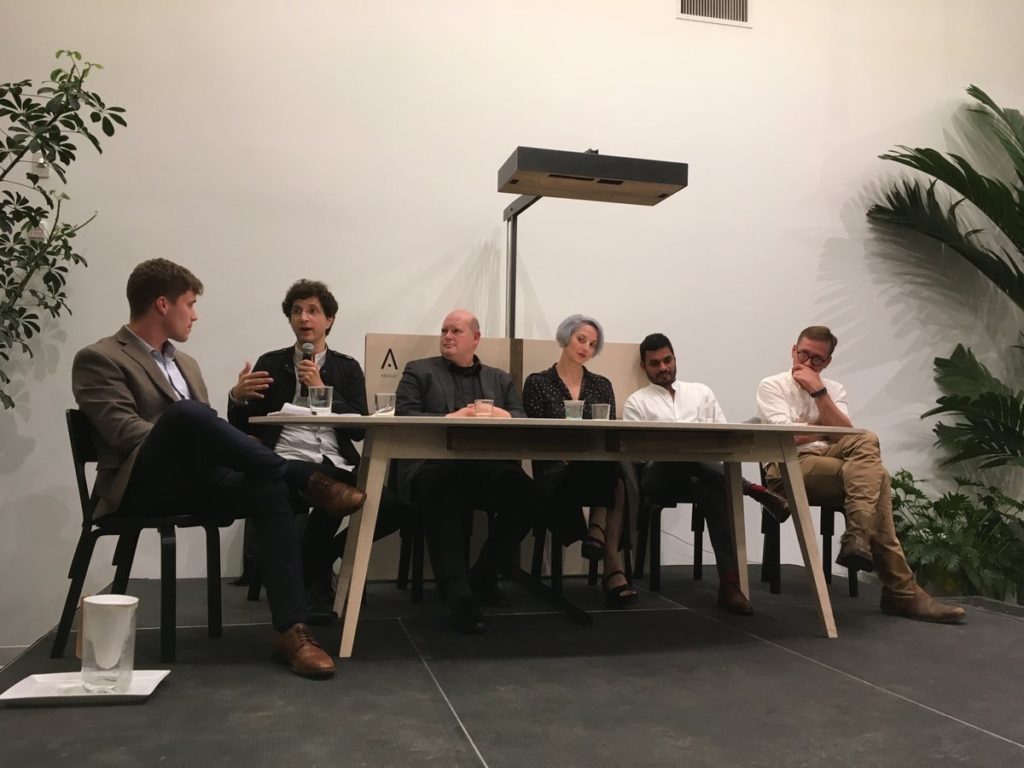
Sanjana Hattotuwa, Special Advisor at the ICT4Peace Foundation was invited to attend Crisis Code: Humanitarian Protection in the Digital Age, a two-day conference exploring how crisis-affected populations can be safeguarded from emerging threats in cyberspace. The conference was organised by Swissnex San Francisco.
Sanjana was invited to speak on a panel on Humanitarian Threats in the Age of Cyberwar and to kickoff a workshop on Taking Stock and Making Plans with Peter Maurer, President of ICRC. The panel was broadcast live over Facebook, and a recorded video stream can be seen here. In this first panel, humanitarian thinkers and cybersecurity leaders sat together to synthesize and reframe the day’s learnings, and to explore emerging threats to civilian populations. The panel was moderated by Joseph Guay, The Policy Lab and also featured Eva Galperin, Electronic Frontier Foundation, Jeff Moss, DEF CON, Paul Nicholas, Microsoft and Nathaniel A. Raymond, Harvard University.
On the panel, Sanjana spoke of the need to put citizens and rights first in the discourse around cybersecurity, and keep in mind that those affected the most by disaster had agency, innovation and ideas. Sanjana pushed back against a new colonialism that saw victims as helpless agents, and where solutions, ideas and systems were imposed upon them by (well-meaning) initiatives that didn’t take into account ground realities, context, culture, gender and other vital local factors. Sanjana also spoke about what needs to be done in the future to make sure innovation in this domain respects the rights of those most at risk of disasters or exploitation.
Earlier in the day, Sanjana was also asked to moderate the workshop on The Digitalization of Humanitarian Action: Assessing Risks and Threats. Alexa Koenig (Human Rights Center, UC Berkeley) who spoke on Open-source investigation techniques for human rights documentation was the foundation for this workshop’s emphasis on determining threats, risks, opportunities and solutions to mitigate risk. Based on the facilitation guide, Sanjana led the participants through a process of determining how each step of the Human Rights Centre’s workflow impacted the safety and security of those who were involved in it, what implications the choice of technologies had on the investigations process and the integrity of information, how each step opened up the process writ large and actors to risk, and finally, how the gaps identifying could be plugged by ways of working that were more secure, technologies that were more robust and choices that took into account risk management and planning.
On Day 2, Sanjana made some opening remarks at the fourth and final workshop of the conference. Peter Maurer (ICRC) & Charlotte Lindsey-Curtet (ICRC) came towards the end of the workshop and gave brief submissions around the role of the ICRC, and their approach to the threats, risks, challenges and opportunities discussed at the workshop. Earlier in the day, questions were taken from participants to pose to Amb. Maurer. Sanjana proposed the question around how the ICRC intended to work with new intermediaries by way of Silicon Valley technology companies around, in particular, protection and response – a mandate that was founded on privacy and vital, inviolable humanitarian principles (and the resulting tensions with the profit oriented business models of major tech platforms).
Sanjana’s opening remarks at the start of the workshop briefly captured the leitmotifs of what was discussed over the past one and a half days.
The Foundation’s input and participant was recognised widely over Twitter. Some of the tweets are included below.
